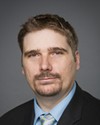Thank you, Mr. Chair.
Dr. Zamorski, before becoming a member of Parliament, I worked as a correctional officer. I worked in prevention in a prison. In the past few years, three of my colleagues, two I was friends with, committed suicide, and those events were traumatic for all the workers.
People had to stop working because it was so devastating. The workers were seriously affected. They managed to get social workers in to speak to people. And in the course of talking to people, they realized that many people were quite depressed and that some had suicidal tendencies themselves. As a result, they called for a study, but of course the request met with resistance. Because they never got an answer, the assumption was that it had to do with cost.
I see everything you've done so far and I see how difficult it is to be a member of the military. The conditions can be absolutely appalling. You need great strength of character. The spirit and morale of these individuals can end up broken.
We see all kinds of reports. Some say things are going well and others say the opposite. You raise an important point. You say we need to delve deeper, not simplify things; we need to do more research. According to you, we need more specific data in order to do a more in-depth evaluation.
Could you comment on how it could be dangerous to claim that everything is fine and that we should stay on the same course we're on now?




